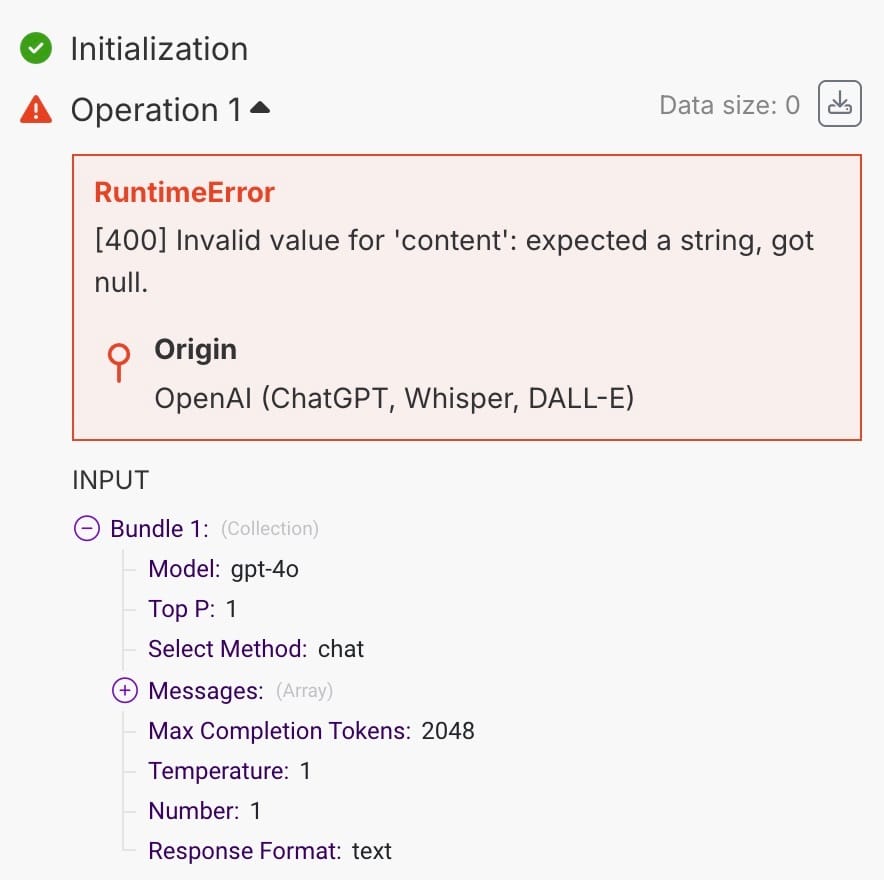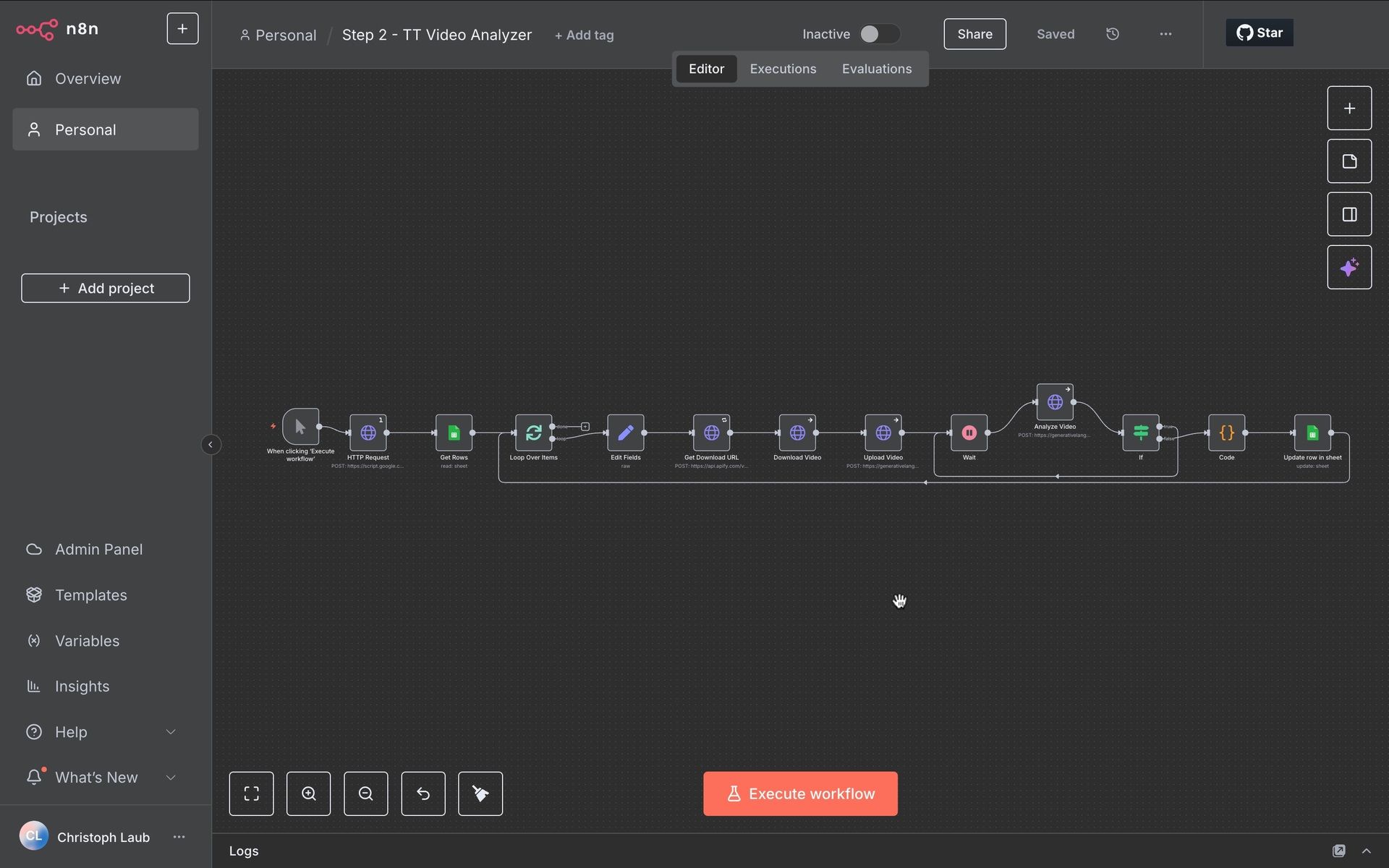- AI @chatgptricks
- Posts
- Master AI automations in 7 steps
Master AI automations in 7 steps
These micro-skills are how you crush automations...

Automations are all the rage right now.
Make.com. n8n. Odds are you’ve seen them online:

The problem?
99% of what you see on social media is engagement bait.
The automations were written by AI, require custom coding to set up, and will most likely break within seconds of turning them on.
So in today’s issue, we thought we’d cover the seven micro-skills you need to build legitimate automations you can use in your own business or potentially even sell.
Skill 1: Master APIs and Webhooks
This is your automation backbone. If you can't connect System A to System B, you're stuck building islands instead of ecosystems.
Learn these three in particular: authentication (getting permission), sending requests (asking for data), and parsing responses (understanding what you get back).

Next, when you build your first automation, start simple.
Connect your CRM to your email tool. Then graduate to more complex chains. The moment you understand how data flows between systems, everything else becomes possible.
Skill 2: Data Transformation
Raw data is like uncut diamonds - valuable but useless until you shape it.
Master JSON (the internet's favorite data format) and CSV (Excel's older, crankier sibling). More importantly, learn to clean, map, and reformat data so System A's "customer_email" becomes System B's "email_address."
This skill alone will save you hundreds of hours of manual copy-pasting. Trust me.
Skill 3: Build Bulletproof Error Handling
Here's where amateurs get exposed. They build automations that work perfectly in test environments with tiny amounts of perfect data.

But as soon as the automation goes live in the wild - and is being slammed by thousands of sets of imperfect data - the automation errors out.
Professional automation builders assume things will break. And because of that, when building, they set their flows up to retry failed requests, send you alerts when something goes sideways, and gracefully handle missing data instead of crashing spectacularly.
Think of error handling like insurance: It’s boring until you desperately need it.
Skill 4: Think Like a System Designer
This separates the pros from the hobbyists. Instead of building one giant automation that does everything, break workflows into logical steps.

Ask yourself: Where should the data live? How do the components connect? What happens if one piece fails?
Good system design means you can fix, update, or replace individual pieces without having to rebuild everything. It's like the difference between building with LEGO blocks versus welding; one is dramatically easier to fix than the other.
Skill 5: Master Security and Governance
Nothing kills an automation project faster than a security breach or compliance violation.
Admittedly, most automations you build for yourself or to sell to other solopreneurs won’t contain sensitive data in the first place. So unlike the Tea App, a security breach won’t result in you going viral for all the wrong reasons.
But if you’re selling automations to legitimate businesses, security is foundational.

Because of that, it’s critical you learn to handle sensitive data correctly, never expose API credentials in plain text, and understand privacy laws that affect your or your client’s industry.
This isn't paranoia - it's professionalism. One leaked customer database (and the lawsuit that would ensue from there) can end your automation career permanently.
Skill 6: Understand Integration Patterns
Not all automations are created equal. Some should run on a schedule (daily reports), others should trigger instantly when something happens (new customer signs up), and some should run on demand (generate invoice).

Master the three patterns:
Event-driven: Instant response to triggers
Scheduled: Regular, predictable runs
On-demand: Manual activation when needed
Mainly because improper scheduling can lead to you burning through more credits (both with your automation platform and via your AI API connections).
Skill 7: Embrace Version Control and Documentation
This is where most people face-plant. They build amazing automations, but after a couple months go by, they can't remember how they work.
Treat your automations like code, even if you're using no-code tools. Keep track of changes, document your logic, and leave notes for future you.
Future you will thank present you. Present you will curse past you if you skip this step.
The Reality Check
Look, we know these skills sound technical (because they are). But we’re not asking you to code the next Instagram. In fact, relative to coding, most of this stuff is easy.

More important, this is about thinking systematically. The best automation builders aren't necessarily the most technical, they're the ones who understand how systems connect and what can go wrong.
Conclusion
Most people approach automation like they're building a house of cards. They look impressive…until someone sneezes and it all comes crumbling down.
On the flip side, the seven skills above will help you build automations that survive contact with reality. Pick one skill, spend a week getting dangerous with it, then move to the next. In three months, you'll be building automations that make your followers think you're some kind of wizard.
And if you’re interested in learning more about vibe coding and automations…
Make sure to join Sentient’s brand-new members community (it’s free : )
Catch you next time,
Louis & Ivan
ChatGPTricks Post of the Week:
What did you think?
Did you enjoy this newsletter blast? |
Want to connect with us? Send us a DM!


